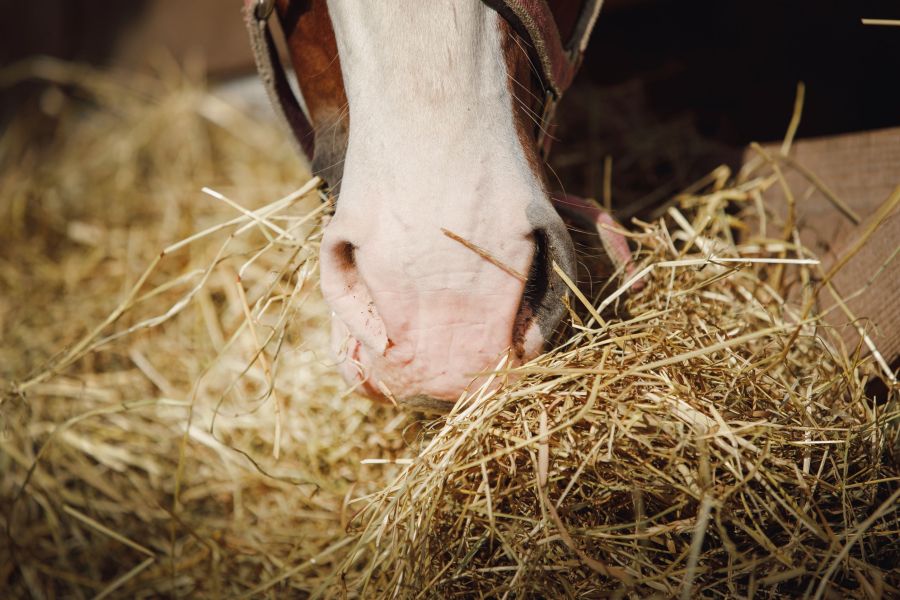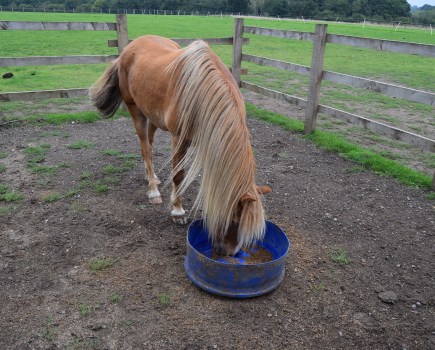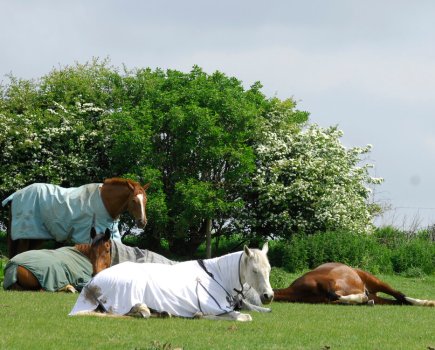Feeding a horse sugar is a massive topic, because it comes from a variety of sources in a horse’s diet. While sugar in the diet provides energy to help fuel your horse’s performance, too much can cause excess weight gain and put them at risk for a number of health problems. An excess of sugar in a horse’s diet has strong links to several metabolic, digestive and orthopaedic disorders.
Many horses will likely receive enough energy for their workload from a low-sugar diet. In fact, often forage with a balancer to top up vitamin and mineral levels is sufficient. That said, sugar is not always the enemy. It can be an important energy source for performance and racehorses who require higher levels of sugar and starch in their diet to fuel performance.
Every horse is different and so it is important to tailor a horse’s sugar intake according to their body condition, history of any related medical disorders and level of activity (work) they are doing. An excess of sugar in the diet can lead to weight gain, increase in the likelihood of developing associated diseases, and increase energy which can lead to excitably.
Owners often increase the amount of feed given to their horses over the winter months, assuming they need the extra energy to maintain body temperature. However, it might be that the horse is ridden less and stabled overnight, therefore expending less energy in total, despite the colder temperatures.
Where does sugar come from?
Many horse owners associate high sugar intake with the addition of manufactured feeds. However, forage is often the largest contributor of sugar in a horse’s diet.
Forage should be used as the base for all good horse diets (at least 1.5-2% body weight of dry matter forage being consumed daily), but its sugar content should not be overlooked.
The sugar content of grass, including hay and haylage, varies greatly depending on weather, plant type, stage of growth, time of year, and even time of day. Forage analysis will be able to determine the exact sugar content of your forage.
Sources of sugar
The following table shows how much of a horse’s daily sugar intake comes from which sources:
| Feed type | Feed intake | Estimated sugar content* |
| Grass (24-hour grazing access) | Up to 5% body weight (500kg horse) | 880g |
| Hay | 8kg (approx. 4 slices) | 820g |
| Haylage | 10kg | 800g |
| Performance mix | 2kg | 130g |
| Low sugar mix | 2kg | 110g |
| Low-calorie balancer | 500g | 20g |
| Apple | 1 medium apple | 19g |
| Carrot | 1 medium carrot | 2.9g |
*Estimated sugar content to be used as a rough guide only. Sugar content in forages can be very variable, and sugar content of manufactured feeds will vary between products.
Carbohydrates explained
Carbohydrates in the horse’s diet can be split into two groups based on the way that they are digested:
Water soluble carbohydrates (WSCs)
These are often referred to as the sugar content of the horse’s diet. They are hydrolysed into simple sugars by enzymes, and then absorbed in the small intestine.
Structural carbohydrates
These undergo bacterial fermentation to produce volatile fatty acids, which are then absorbed and able to be used as a source of energy.
How to limit sugar intake
It is important to know how much sugar is in your horse’s diet, and how to control it if you need to in order to keep them fit and healthy. Doing the following will help with this:
- Forage type and volume fed should be considered carefully. Don’t underestimate the contribution that grazing can make to the diet.
- Soaking hay can reduce the sugar content. The effect of this depends on the plant type, soaking time, and the volume and temperature of the water used.
- Restricted grazing may be required. Sugar in the grass is typically highest during periods of more rapid growth in late spring and summer. Limited time spent turned out, restricting the grazing area, and using a grazing muzzle can all help.
- Sugar in grass can vary seasonally, during growth flushes, and with the time of the day. Typically, sugar levels rise through the morning, peak in the afternoon and then decline overnight. Therefore, stabling through the day and turning your horse out overnight may help to limit sugar intake.
- Select complementary feeds for the individual. Make sure you meet your horse’s vitamin and mineral requirements without exceeding their energy needs, depending on their age, breed and activity level.
- When assessing a manufactured feed, use the weight fed and percentage of sugar together to assess sugar contribution to the diet using the recommended feeding rate.For instance, a standard balancer fed at 500g daily and a low-sugar mix fed at 2kg daily could have the say percentage of sugar – for example, 5.5%. However, 5.5% of 500g is 27.5g sugar, whereas 5.5% of 2kg is 110g.
Feeding molasses: the myth
It is often assumed that molasses is pure sugar and that feeding it to a horse will automatically make their diet high in sugar. However, this is not always the case.
Molasses is a by-product of sugar beet or sugar cane processing, and usually only contains 30-50% sugar. It is typically included in feeds at low volumes, so often doesn’t contribute as much to the total sugar content as might be expected. It is the total sugar content that is important, rather than the inclusion of specific ingredients.
If you want to know more about the sugar content of your horse’s feed, what their likely requirements are, and what the best diet for them would be, your feed company’s nutritional helpline is a fantastic resource to help construct a tailored plan to meet your horse’s individual needs.
![]() Have you heard about Your Horse’s #FitNotFat campaign? Equine obesity is an enormous welfare problem and we’re on a mission to provide owners and riders with the knowledge, skills and information you need to keep your horse in tip-top health. It could be life saving! Find out more
Have you heard about Your Horse’s #FitNotFat campaign? Equine obesity is an enormous welfare problem and we’re on a mission to provide owners and riders with the knowledge, skills and information you need to keep your horse in tip-top health. It could be life saving! Find out more








